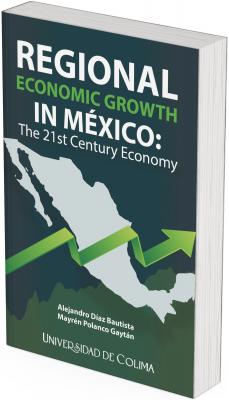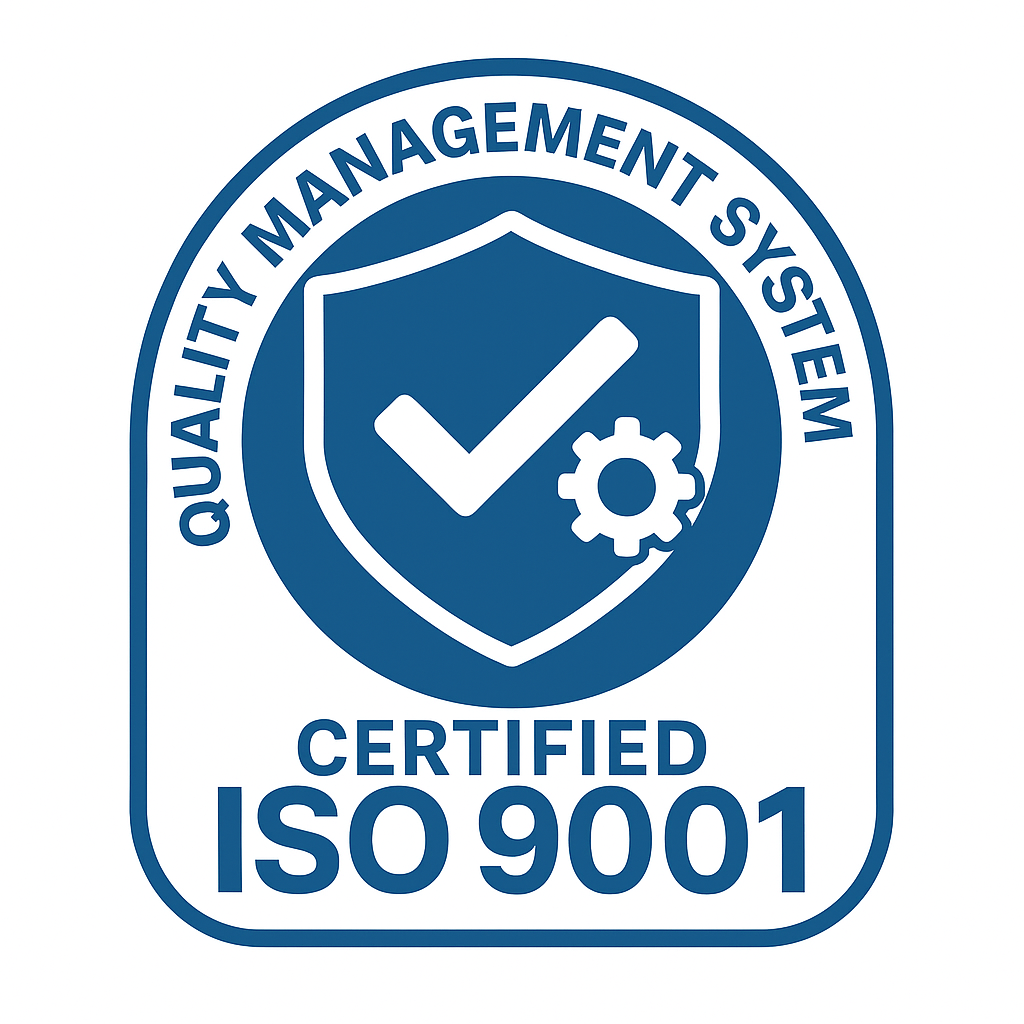Regional Economic Growth In Mexico: The 21st Century Economy
Keywords:
Enonomy, regional studies, trade, economic growth, economic convergenceSynopsis
Regional economics in Mexico is concerned with the spatial allocation of economic activity. It is centered along the analysis within regions and states or metropolitan areas of a country. Mexico as a country is now one of the fastest-growing economies in Latin America and a model of financial and commercial integration. But formidable development and economic growth challenges lie ahead for Mexico in the next quarter century, as it observed the deep contrasts between Mexico's rich and poor states, growing urban centers and destitute rural areas, and between Mexicans rich enough to be considered between the richest men in the world and owning companies that are able to compete with industrialized countries, and those Mexicans for whom the benefits of globalization have not yet materialized.
In the coming years, Mexico faces many challenges in order to support economic growth. The economic reforms, including the financial sector reform, labor reform, energy and decentralization, promises to give the country a greater legitimacy, stronger sustainability and a higher rate of economic growth.
The present book covers the effects of human capital and research and development on growth and regional convergence in Mexico. It also takes a closer look at institutions and economic growth in Mexico; and also covers trade, economic growth and convergence.
Downloads
References
Abramovitz, M. (1979). Rapid Growth Potential and its Realisation: The Experience of Capitalist Economies in the Postwar Period. In: E. Malinvaud (ed.), Economic Growth and Resources. London: Palgrave Macmillan - International Economic Association Series. https://doi.org/10.1007/978-1-349-16173-7_1
Aghion, P., and Howitt, P. (1998). Endogenous Growth Theory. Cambridge, ma: mit Press.
Anderson, James E., and Marcouiller, D. (1999). Trade, Insecurity, and Home Bias: An Empirical Investigation. NBER Working Paper No. 7000. https://doi.org/10.3386/w7000
Ark, Van B. (1995). Sectoral Growth Accounting and Structural Change in Post-war Europe. Research Memorandum GD-23, Dec. Retrieved from https://www.researchgate.net/publication/4868128_Sectoral_Growth_Accounting_and_Structural_Change_in_Post-War_Europe
Ark, Van B. (1996). Issues in Measurement and International Comparison of Productivity - An Overview. Research Memorandum GD-28, University of Groningen. Retrieved from https://pure.rug.nl/ws/portalfiles/portal/3245043/gd28.pdf
Bardhan, P. (1997). Corruption and Development: A Review of Issues. Journal of Economic Literature, 35(3): 1320-1346, September.
Barro, R.J. (1991). Economic Growth in a Cross Section of Countries. Quarterly Journal of Economics, 106: 407-444. https://doi.org/10.2307/2937943
Barro, R.J., and Lee, J.W. (1993). International Comparisons of Educational Attainment. Journal of Monetary Economics, 32: 363-394. https://doi.org/10.3386/w4349
Barro, R.J., and Lee, J.W. (1996). International Measures of Schooling Years and Schooling Quality. American Economic Review, Papers and Proceedings, 86 (2): 218-223.
Barro, R.J., and Sala-i-Martin, X. (1991). Convergence Across States and Regions. Brookings Papers on Economic Activity, 1: 107-158. https://doi.org/10.2307/2534639
Barro, R.J., and Sala i Martin, X. (1992). Convergence Nils Gottfries: Insiders, Outsiders, and Nominal Wage Contracts. Journal of Political Economy, 100 (2): 223- 251. https://doi.org/10.1086/261817
Barro, R.J., and Sala-i-Martin, X. (1995). Economic Growth. New York: McGraw-Hill.
Bauer, P.W., and Cromwell, B. (1989). The Effect of Bank Structure and Profitability on Firm Openings. Economic Review, 25(4): 29-39.
Bayoumi, T.; Coe, D., and Helpman, E. (1999). R&D Spillovers and Global Growth. Journal of International Economics, 47: 399-428. https://doi.org/10.1016/S0022-1996(98)00018-X
Becker, G.; Murphy, K., and Tamura. H. (1990). Human Capital, Fertility, and Economic Growth. Journal of Political Economy, 98: s12-s37. https://doi.org/10.3386/w3414
Bernard, A.B., and Jones, I.J. (1996). Comparing Apples to Oranges. Productivity Convergence and Measurement Across Industries and Countries. American Economic Review, 86 (5): S. 1216-1238.
Bottazzi, L., and Peri, G. (1999). Innovation, Demand and Knowledge Spillovers: Theory and Evidence from European Regions. London: cepr Discussion Paper No. 2279. https://doi.org/10.2139/ssrn.170590
Broadberry, S.N. (1993). Manufacturing and the Convergence Hypothesis: What the Long Run Data Show. The Journal of Economic History, 53(4): S. 772-795. https://doi.org/10.1017/S0022050700051317
Campos, Nauro F., and Nugent, Jeffrey B. (1999). Development Performance and the Institutions of Governance: Evidence from East Asia and Latin America. World Development, 27(3): 439-452. https://doi.org/10.1016/S0305-750X(98)00149-1
Carlton, Dennis W. (1979). Why Do New Firms Locate Where They Do: An Econometric Model. In: William C. (ed.), Wheaton Interregional Movements and Regional Growth. Washington, dc: The Urban Institute.
Cass, D. (1965). Optimum Growth in an Aggregative Model of Capital Accumulation. Review of Economic Studies, 32: S. 233-240. https://doi.org/10.2307/2295827
Coe, D.T., and Helpman, E. (1995). International R&D Spillovers. European Economic Review, 39: 859-887. https://doi.org/10.1016/0014-2921(94)00100-E
Consejo Nacional de Ciencia y Tecnología (Conacyt) (2000). Actividades científicas y tecnológicas. Pagina electrónica del Conacyt: https://conacyt.mx/
Consejo Nacional de Población (Conapo) (1998). Proyecciones de la población de Mexico, 1996-2050 / Projections of the Mexican Population, 1996-2050. Mexico.
Cornett, Andreas P. (2001). International Trade and Specialization in a Global Framework: A Regional Integration Perspective. Centre for European Studies, Working Paper No. 6/2001.
Cuadrado-Roura, J.; Garcia-Graciano, B., and Raymond J. (1999). Regional Convergence in Productivity and Productive Structure: The Spanish Case. International Regional Science Review, 22(1): 35-53. https://doi.org/10.1177/016001799761012190
Dávila, E.; Kessel, G., and Levy, S. (2002). El Sur tambien existe: Un ensayo sobre el desarrollo regional de Mexico. Economía Mexicana, XI (2): 205-261. Retrieved from https://core.ac.uk/download/pdf/6506966.pdf
Díaz-Bautista, A. (2000) Convergence and Economic Growth in Mexico. Frontera Norte, 13: 85-110.
Díaz-Bautista, Alejandro (2001). An Introduction to Institutional Change, Corruption and Economic Growth. Cuaderno de Trabajo, dte 35/01, Departamento de Estudios Económicos, Colef.
Díaz-Bautista, Alejandro (2002a). Convergence in Telecommunications Infrastructure and Human Capital: México's Economic Growth in the Emerging Digital Economy. México: El Colegio de la Frontera Norte, Departamento de Estudios Económicos.
Díaz-Bautista, Alejandro (2002b). nafta Economic Integration and Regional Economic Growth: Trade, Institutions and Convergence. In the 15th European Advanced Studies Institute in Regional Science, organized through the Nordic Section of the Regional Science Association (ns-rsa). Eksjö, Sweden.
Díaz-Bautista, Alejandro (2003). Los determinantes del crecimiento económico. Comercio internacional, convergencia y las instituciones. México: Editorial El Colef y Plaza y Valdés.
Díaz-Bautista, Alejandro (2003a). Tijuana's Dynamic Unemployment and Output Growth. Frontera Norte, 15(29).
Díaz-Domínguez, Mauro (1995). Convergencia Económica. Tesis de licenciatura en Economía. Instituto Tecnológico Autónomo de México (ITAM).
Dollar, D. and Wolff, E.N. (1988). Convergence of Industry Labor Productivity among Advanced Economies, 1963-82. Review of Economics and Statistics, 70: S. 549-558. https://doi.org/10.2307/1935817
Dollar, D., and Wolff, E.N. (1993). Competitiveness, Convergence and International Specialization. USA: mit-Press, Cambridge.
Due, John F. (1961). Studies of State-Local Tax Influence on Location of Industry. National Tax Journal, 14 (2): 163-173. https://doi.org/10.1086/NTJ41790839
Duffy, Neal E. (1994). Determinants of State Manufacturing Growth. Journal of Regional Science, 34 (2): 137-162. https://doi.org/10.1111/j.1467-9787.1994.tb00860.x
Edwards, S. (1992). Trade Orientation, Distortions and Growth in Developing Countries. Journal of Development Economics, 39(1): 31-57. https://doi.org/10.1016/0304-3878(92)90056-F
Esquivel, G. (1999). Convergencia regional en México. El Trimestre Económico, lxvi, October-Decembre. Mexico.
Fischer, Stanley (1991). Growth, Macroeconomics, and Development. nber Macroeconomics Annual, 6: 329-364. Retrieved from: https://doi.org/10.1086/654175
Garza Campos, Marco Antonio (1994). Diferencias interestatales en niveles de vida: Evolución 1970-1988. Entorno Económico. Boletín trimestral del Centro de Investigaciones Económicas, xxxii(1). uanl, Monterrey.
Gerschenkron, A. (1962). Economic Backwardness in Historical Perspective: A Book of Essays. Cambridge, MA: Belknap Press of Harvard University Press.
Gouyette, C., and Perelman, S. (1997). Productivity Convergence in oecd Service Industries. Structural Change and Economic Dynamics, 8: S. 279-295. https://doi.org/10.1016/S0954-349X(97)00008-8
Grossman, G.M., and Helpman, E. (1989). Product Development and International Trade. Journal of Political Economy, 97: 1261-1283. https://doi.org/10.1086/261653
Grossman, G.M. and Helpman, E. (1991). Innovation and Growth in the Global Economy. Cambridge, MA: The MIT Press.
Hanson, Gordon H. (2000). US-Mexico Integration and Regional Economies: Evidence from Border- City Pairs. Journal of Urban Economics,50 (2): 259-287. https://doi.org/10.1006/juec.2001.2217
Instituto Nacional de Estadística y Geografía (INEGI) (2015). México's Statistics. Data set at: http://www.inegi.gob.mx/
Koopmans, T.C. (1965). On the Concept of Optimal Economic Growth. In: Rand McNally, (Ed.), The Econometric Approach to Development Planning. Amsterdam: North Holland Publishing Company.
Krugman, P. (1991a). Geography and Trade. Cambridge, MA: MIT Press.
Krugman, P. (1991b). Increasing Returns and Economic Geography. Journal of Political Economy, 99(3): 483-499. https://doi.org/10.1086/261763
Lucas, Robert E. (1988). On the Mechanics of Economic Development. Journal of Monetary Economics, 22: 3-42. https://doi.org/10.1016/0304-3878(88)90071-5
Lucas, Robert E. (1990). Why Doesn't Capital Flow from Rich to Poor Countries? American Economic Review Papers and Proceedings, 80(2): 92-96.
Lustig, Nora (1998). Mexico - The Remaking of an Economy. 2nd Edition. Washington, D.C.: The Brooking Institution.
Mankiw, N.G. (1993). Macroeconomics. New York: Worth Publishers. Mankiw, N.G.
Romer, D., and Weil, D.N. (1992). A Contribution to the Empirics of Economic Growth. The Quarterly Journal of Economics, 107 (2): 407-437. https://doi.org/10.2307/2118477
Marshall, A. (1965). The Economics. USA: Cornell University Press, H. Milford, Oxford University Press.
Mauro, Paolo (1995). Corruption and Growth. The Quarterly Journal of Economics, 110(3): 681-713. https://doi.org/10.2307/2946696
Messmacher, Miguel (2000). Desigualdad regional en México. El efecto del tlcan y otras reformas estructurales. Documento de Investigación No.2000-4, Dirección General de Investigación Económica, Banco de México, Diciembre, pp. 1-33.
Ministry of Education (2015). Educational Statistics. Secretaría de Educación Pública, Mexico. Data set at: https://www.gob.mx/sep
Mulligan, C., and Sala-I-Martin, X. (1992). Two Capital Goods Models of Economic Growth. Unpublished Paper.
Munnell, A.H. (1990). How Does Public Infrastructure Affect Regional Economic Performance? New England Economic Review, Federal Reserve Bank of Boston, issue September/October. pp. 69-112.
North, Douglass C. (1990). Institutions, Institutional Change and Economic Performance, Political Economy of Institutions and Decisions. Cambridge: Cambridge University Press. https://doi.org/10.1017/CBO9780511808678
North, Douglass C. (1993). Institutions and Productivity in History. usa: Washington University.
North, Douglass C. (1994). Institutional Change: A Framework of Analysis. usa: Washington University.
North, Douglass C., and Thomas, R. (1973). The Rise of the Western World: A New Economic History. Cambridge: Cambridge University Press. https://doi.org/10.1017/CBO9780511819438
Organisation for Economic Co-operation and Development (oecd) (1994). The Measurement of Scientific and Technological Activities. Proposed Standard Practice for Surveys of Research and Experimental Development.FRASCATI Manual 1993. Paris: oecd.
Organisation for Economic Co-operation and Development (oecd) (1997). isdb 98, International Sectoral Data Base. User's Guide. Paris: oecd Proceedings.
Organisation for Economic Co-operation and Development (oecd) (2000). Main Science and Technology Indicators. Paris: oecd.
Paci, R. (1997). More Similar and Less Equal: Economic Growth in the European Regions. Weltwirtschaftliches Archiv, 133(4): S. 608-634. https://doi.org/10.1007/BF02707405
Porter, Michael E. (1998). Clusters and the New Economics of Competition. Harvard Business Review, November-December.
Rebelo, S. (1991). Long-Run Policy Analysis and Long-Run Growth. Journal of Political Economy, 99: 500-521. https://doi.org/10.1086/261764
Rodrik, Dani (2001). Institutions, Intergration and Geography: In Search of the Deep Determinants of Economic Growth. Harvard University. Retrieved from: https://drodrik.scholar.harvard.edu/files/dani-rodrik/files/institutions-integration-geography.pdf
Romer, P.M. (1986). Increasing Returns and Long-Run Growth. Journal of Political Economy, 94: 1002-1037. https://doi.org/10.1086/261420
Romer, P.M. (1990). Endogenous Technological Change. Journal of Political Economy, 98: S71-S102. https://doi.org/10.1086/261725
Romer, D. (1996). Advanced Macroeconomics. New York: McGraw-Hill.
Rose-Ackerman, S. ([1974] 1978). Corruption: A Study in Political Economy. New York: Academic Press. https://doi.org/10.1016/B978-0-12-596350-3.50005-3
Rose-Ackerman, S. (1999). Corruption and Government: Causes, Consequences and Reform. New York: Cambridge University Press. https://doi.org/10.1017/CBO9781139175098
Sachs, J., and Warner, A. (1995). Economic Reform and the Process of Global Integration. Brookings Papers on Economic Activity, 1: 1-118. https://doi.org/10.2307/2534573
Sala-i-Martin, X. (1996). Regional Cohesion: Evidence and Theories of Regional Growth and Convergence. European Economic Review, 40(6): 1325-1352. https://doi.org/10.1016/0014-2921(95)00029-1
Sala-I-Martin, X. (1997). I Just Ran Two Million Regressions. American Economic Association Papers and Proceedings, 87:178-183, May. https://doi.org/10.3386/w6252
Sala-i-Martin, Xavier X., and Barro, Robert Joseph (1995). Technological Diffusion, Convergence, and Growth. Center Discussion Paper, No. 735, Yale University, Economic Growth Center, New Haven, CT.
Salinas de Gortari, Carlos (2000). Mexico, un paso difícil a la modernidad. Barcelona: Plaza y Janes Editores, S.A.
Samuelson, Paul A. (1971). Ohlin Was Right. The Swedish Journal of Economics, 73(4): 365-384, Dec. https://doi.org/10.2307/3439219
Saxenian, A. (1994). Regional Networks: Industrial Adaption in Silicon Valley and Route 128. A Journal of Policy Development and Research, 2 (2): 41-60.
Secretaría de Desarrollo Económico (SEDECO) (2015). Economic Statistics. Mexico. Data set at: https://www.sedeco.cdmx.gob.mx/
Secretaría de Educación Pública (sep) (2015). Educational Statistics. Ministry of Education. Data set at: https://www.gob.mx/sep
Secretaría de Educación Pública (sep) (2000). Estadísticas Educativas. México: sep. Website: http://www.sep.gob.mx
Solow, R.M. and Swan, T.W. (1956). Economic Growth and Capital Accumulation. Economic Record, 32: 334-361. https://doi.org/10.1111/j.1475-4932.1956.tb00434.x
Solow, R.M. (1956). A Contribution to the Theory of Economic Growth. The Quarterly Journal of Economics, 70(1): S. 65-94. https://doi.org/10.2307/1884513
Sternberg, R. (1999). Innovative Linkages and Proximity: Empirical Results from Recent Surveys of Small and Medium-Sized Firms in German Regions. Regional Studies, 33: 529-540. https://doi.org/10.1080/00343409950078224
Storper, M. (1992). Regional 'Worlds' of Production: Learning and Innovation in the Technology Districts of France, Italy and the usa. Regional Studies, 27: 433-455. https://doi.org/10.1080/00343409312331347675
Swan, T.W. (1956). Economic Growth and Capital Accumulation. Economic Record, 32: S. 334-361. https://doi.org/10.1111/j.1475-4932.1956.tb00434.x
Tanzi, V. (1998). Corruption Around the World: Causes, Consequences, Scope, and Cures. imf Staff Papers, 45(4): 559-94. https://doi.org/10.2307/3867585
Transparencia Mexicana (2001). Encuesta Nacional de Corrupción y Buen Gobierno (encbg). México. Retrieved from: https://www.tm.org.mx/wp-content/uploads/2013/05/Presentacion-Encuesta-Nacionalde-Corrupci%C3%B2n-y-Buen-Gobierno-2001.pdf
Transparency International (2000). Transparency International Releases the Year 2000 Corruption Perceptions Index. Transparency International the Global Coalition Against Corruption. New index is basedon multiple surveys from 1998-2000. Retrieved from: https://www.transparency.org/en/press/transparency-international-releases-theyear-2000-corruption-perceptions-in.
Transparency International (2002). The Integrity Pact. The Concept, the Model and the Present Applications. A Status Report. Transparency International Integrity Pact and Public Procurement Programm. Retrieved from: https://baselgovernance.org/sites/default/files/2020-03/ti_the_integrity_pact_a_status_report_2002.pdf
Verspagen, B. (1991). A New Empirical Approach to Catching up or Falling behind. Structural Change and Economic Dynamics, 2: 359-380. https://doi.org/10.1016/S0954-349X(05)80008-6
Wei, Shang-Jin (2000). Natural Openness and Good Government. Nber Working Paper No. W7765. https://doi.org/10.3386/w7765
Wheat, Leonard F. (1986). The Determinants of 1963-77 Regional Manufacturing Growth: Why the South and West Grow. Journal of Regional Science, 26(4): 635-659. https://doi.org/10.1111/j.1467-9787.1986.tb01067.x
Wolff, H. (1993). Trade Orientation: Measurement and Consequences. Estudios de Economía, 20: 52-72.
World Bank (2015). World Development Indicators (cd-rom). Washington, DC. Data set at: https://databank.worldbank.org/source/world-development-indicators

Downloads
Published
Series
Categories
License

This work is licensed under a Creative Commons Attribution-NonCommercial-ShareAlike 4.0 International License.







